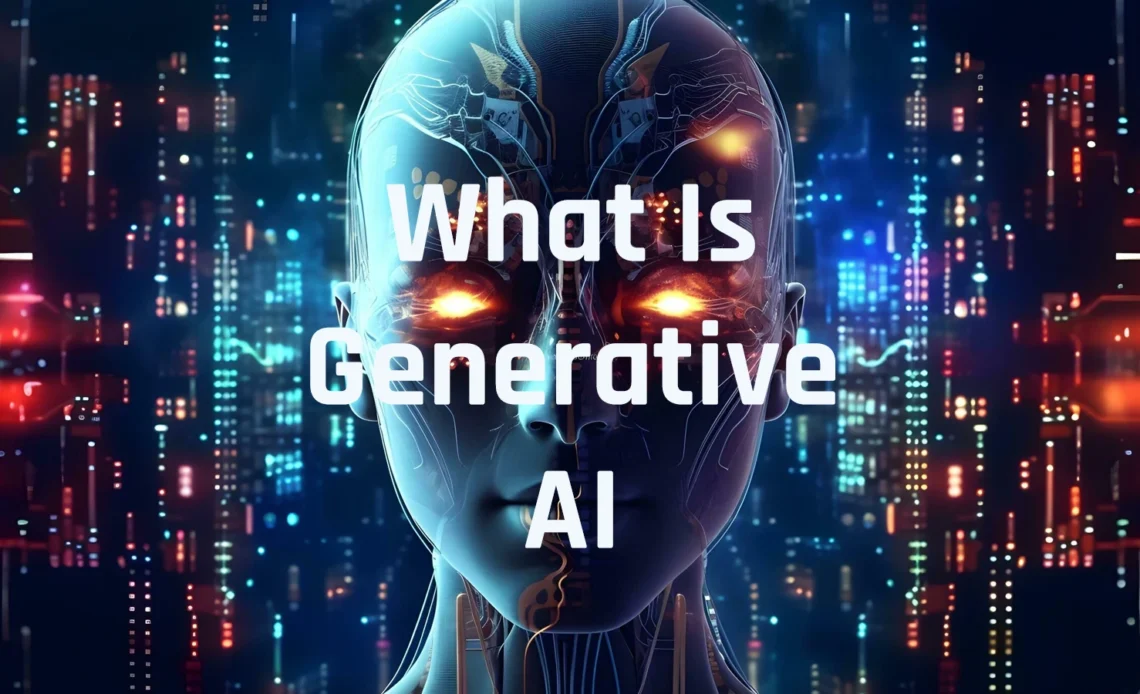Introduction: The Shift Is Here — And It’s Generative
You can feel it in every boardroom, see it in every investor deck, and hear it echoed across every industry conference: Generative AI has arrived.
But this isn’t just another hype cycle or tech trend. This is a foundational shift in how we create, compete, and communicate. And it’s catching many leaders off guard, not because they lack interest, but because they’re asking the right question: What exactly is Generative AI, and what does it mean for the future of my business?
From Predictive to Creative: What Makes Generative AI Different?
Traditional AI was built to predict. It analyzed historical data, recognized patterns, and made statistically likely guesses. Whether forecasting churn, predicting demand, or tagging customer sentiment, predictive AI excelled at saying, “Here’s what might happen.”
Generative AI takes that capability to a new frontier. It doesn’t just interpret, it creates. From full marketing copy to legal clauses, software code to architectural blueprints, Generative AI generates original outputs based on patterns it has learned from massive datasets.
That shift from predictive to generative unlocks new possibilities across nearly every domain:
- Marketing teams can now scale content creation across languages and formats.
- Designers can iterate product concepts in hours, not weeks.
- Engineers use AI to co-write code, test logic, and reduce rework.
- Executives rely on AI to simulate decisions and draft strategy memos.
Generative AI changes the question from “What is likely to happen?” to “What can we create next?”
Real-World Applications Already in Motion
This is no longer theoretical. Across industries, leaders are already deploying GenAI to unlock value in critical areas:
- Marketing & Brand
Dynamic email sequences, hyper-personalized campaigns, product descriptions tailored to customer behavior—all at scale. What once took a team of writers now takes a single prompt. - Customer Service
AI agents that handle tier-1 support with empathy and logic. These models go beyond scripts, adapting in real-time to customer tone and context. - Product Development
Figma designs rendered by text prompts. UX flows created collaboratively between humans and models. Engineering teams using AI to troubleshoot, optimize, and even refactor code. - Sales Enablement
Proposal generation, deal desk automation, and custom pitch materials based on CRM data. GenAI turns messy data into tailored insights that close deals faster. - Knowledge Management
Imagine every institutional document distilled into a living, searchable intelligence layer. GenAI makes internal knowledge as accessible as asking a question.
But Not Without Risks
Every revolution brings new terrain to navigate. Generative AI is no exception.
The risks are real. These models can “hallucinate,” confidently presenting incorrect information. They may inherit or amplify bias from the data they’re trained on. They raise ethical concerns about intellectual property, transparency, and workforce displacement.
That’s why leaders must lead from the front. GenAI isn’t plug-and-play. It’s guide-and-govern.
Success won’t come from experimentation alone. It will come from strategic integration, with guardrails.
Generative AI Is Not Just Tech — It’s a Strategic Imperative
In my own pivot from a two-decade sales leadership journey into AI, I witnessed something remarkable. The most successful organizations weren’t simply deploying models. They were building AI literacy at every level, teaching teams to ask better questions, to use prompts creatively, to treat GenAI as a partner in performance.
They weren’t overwhelmed by the speed of change. They were steering it.
Generative AI is not a disruptor to fear. It is a co-pilot to empower.
It’s not about jumping on every new model. It’s about asking better questions:
- What parts of your business are bottlenecked by manual effort?
- Where does creativity meet inefficiency?
- How can human expertise be amplified, not replaced, by intelligent systems?
Action Steps for Leaders
If you’re leading an organization through this shift, start here:
- Educate your leadership team — not just the tech team — on the basics of how GenAI works.
- Run low-risk, high-value experiments in sales, marketing, or service to see results quickly.
- Set clear policies around data security, model boundaries, and responsible use.
- Invest in prompt literacy — your teams need to learn how to guide AI with clarity and purpose.
- Embed AI into workflows, not just as tools, but as systems that learn and evolve with your strategy.
Conclusion: The Future Won’t Wait
Generative AI is not a wave to ride, it’s an ocean to navigate. Those who learn to sail it early will redefine the markets they operate in.
The question is no longer whether to engage. The question is how to lead.
Start small. Think big. Scale fast. And lead boldly.
💬 How are you integrating Generative AI into your business?
I’d love to hear what’s working, what’s not, and what questions are keeping you up at night. Let’s learn together.


